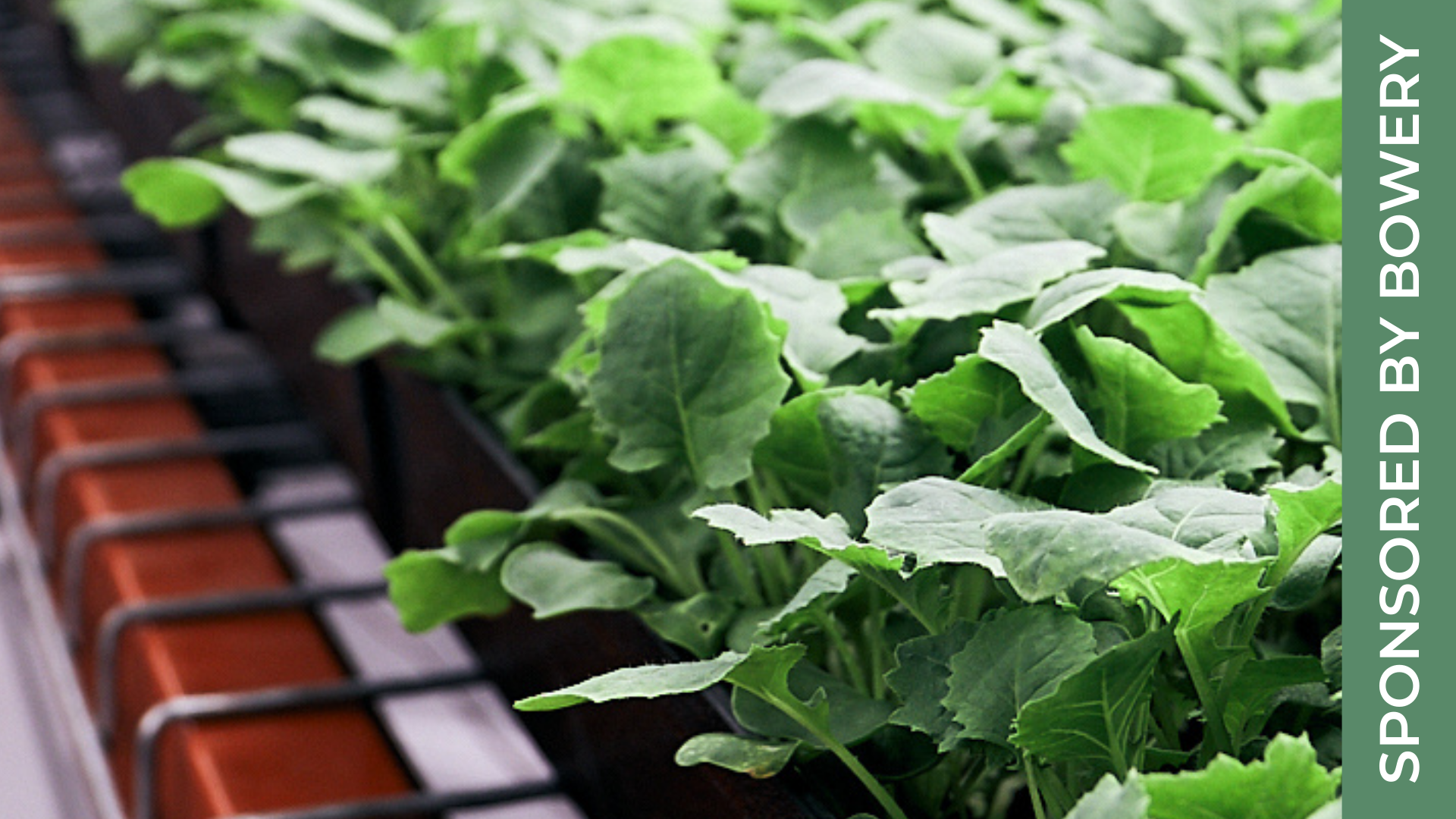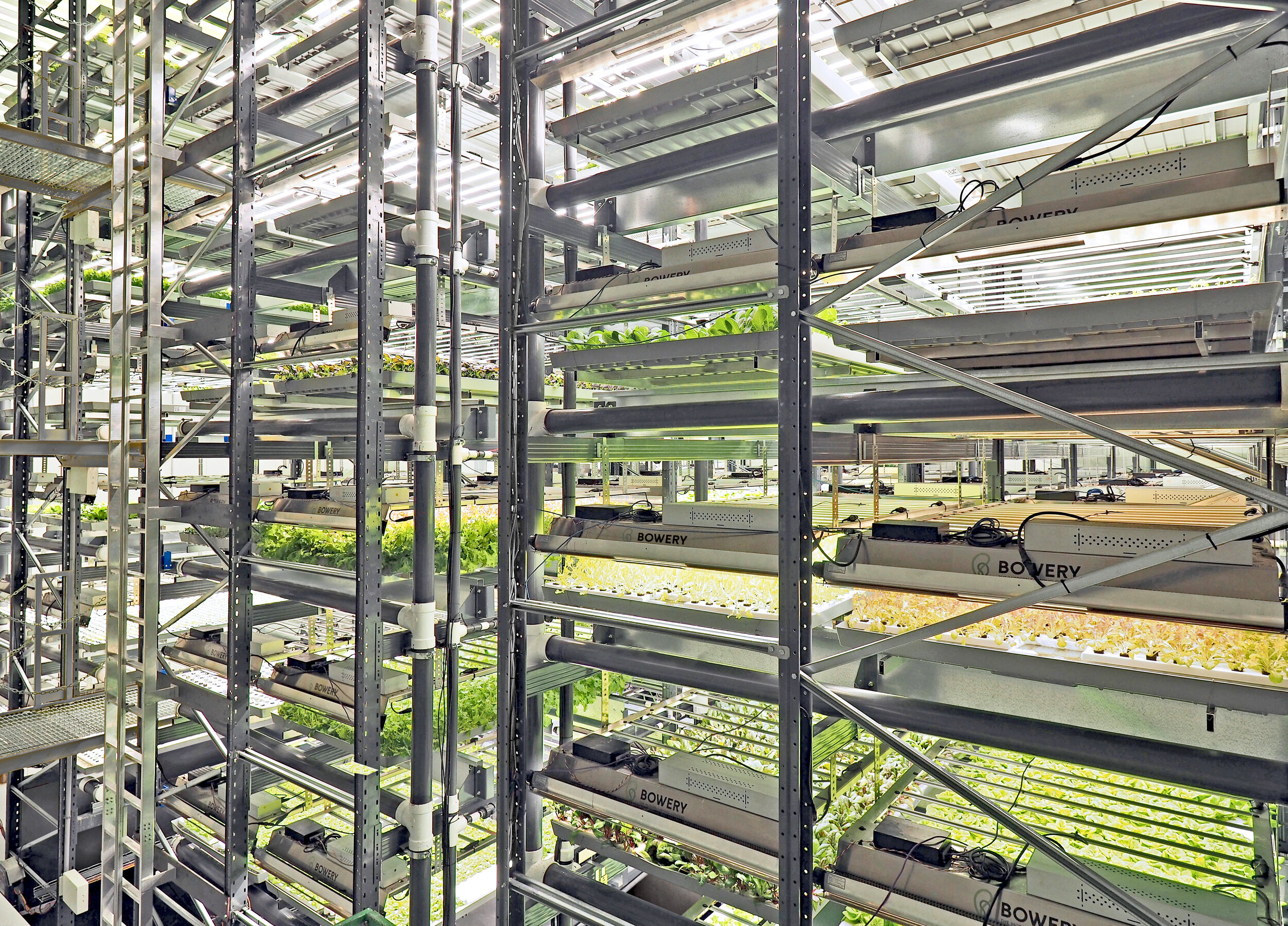Jun 21, 2021
Bowery's 'Farm X' Is Pushing Vertical Farming To New Heights
.png)
Image sourced from Bowery Farming
Editor’s note: The following information is derived from an interview Agritecture conducted with Henry Sztul, Chief Science Officer at Bowery Farming.
Redefining the Modern Farming Company
What does kale smell like when it’s being grown in a state-of-the-art indoor lab under perfect conditions?
“It’s unlike anything you’ve smelled before,” says Henry Sztul, Bowery’s Chief Science Officer. Sztul was giddy describing the smells and flavors of the produce being grown at Bowery’s new plant science innovation hub - not to mention the science and technology that powers it all - during a recent 30-minute interview with Agritecture.

Image sourced from Bowery Farming
The launch of this R&D hub known as “Farm X” expands Bowery’s R&D capacity by 300%, further accelerating the commercialization of products specifically designed for Bowery’s unique operating system. Featuring a sensory lab and experimental innovation space, this hub will blaze new trails in the indoor vertical farming industry.
With 10+ years of experience as an engineer and physicist, Sztul understands the role that R&D can play in staying a step ahead. According to Sztul, “R&D is ingrained into the culture at Bowery. It has been from the very beginning.” The intensive focus on using data to improve outcomes is part of what Bowery means when they refer to themselves as “the modern farming company.”
“Farm X opens up the capability to start our own breeding program.” With this addition, Bowery is changing the vertical farming landscape by testing out new crops faster. Their team of plant breeders and scientists will soon be able to pilot new growing recipes for crops alongside efficiency improvements “to optimize both recipe and schedule” for each crop.
Going Beyond The Typical Crops
To grow more in the same footprint of land, Bowery has added individual growing rooms for more granular environmental control, as well as a “sensory lab”. These permit Bowery to “look for the newest and best cultivars to bring to our production farms.”
.jpg)
Image sourced from Bowery Farming
Starting with arugula, “we can create and craft the perfect type of seed in the leafy green space.” Sztul shares how even though arugula is a common vertically-farmed product, “it’s a wild species, and little work and energy has been devoted to crafting the product, particularly for indoor growing.” Bowery is honing in on this opportunity to diversify what is available in the market.
Sztul adds that Bowery wants “to complement this in the new product space by encouraging people to think about produce that is newer to vertical farming - strawberries, tomatoes, other fruiting crops, and tuber crops like turnips and radishes.”
Through enhanced yield and quality exploration, and looking for the newest and best cultivars to bring to their production farms, Bowery will be able to look beyond leafy greens and bring to market a major expansion of crop types at scale that the vertical farming industry has yet to see.
Taking Action through Data & Experimentation
Alongside expanding their crop portfolio and taste profiles, Bowery is putting more emphasis on creativity and experimentation.
Sztul explains that “what we’ve done is set up a space where our engineering teams, our robotics-automation team, and our tech team can come together and explore what's in the future - what’s beyond where we are today. It’s [been] great to see teams from all over Bowery come together to use this space and push ahead on things like harvesting, transplanting, seeding, packaging, on top of all of the growing.”
Bowery’s combination of in-house software, hardware, and artificial intelligence equip the team to examine the crops in extreme detail, assessing characteristics like growth rate, plant quality, leaf count, greenness, leaf morphology - and then to make adjustments as necessary.
.jpg)
Image sourced from Bowery Farming
“Having that ability to create the perfect customizable environment, not just for the butterhead lettuce that we're growing there now, but for the kale or arugula that we're going to grow there next, makes the systems highly adaptable. So, the BoweryOS, hardware, software, and the AI all come together in a really exciting way to magnify what’s possible.”
In terms of data collection, Sztul highlights, “many in the industry pride themselves in gathering millions of data points a day...but it's how you take the data, turn it into information, and then turn the information into action that’s important.”
A Growing Network of Farms
It’s not only that Bowery has built this type of R&D facility which makes it so noteworthy, but also the fact that Farm X is directly tied into Bowery’s growing network of farms. Other R&D facilities may excel at research, but commercialization is another ballgame - and oftentimes key learnings never escape the lab setting.
Sztul spotlights this “tight connection” as a key Bowery differentiator. “Essentially, the fact that any learnings that come from Farm X can be distributed to our network of farms - the minute or the second we're ready, the recipe permeates through our network of farms. That's the start of something really special because it isn’t just a one-way connection.”
With his vision for technology scaling throughout the industry, Sztul adds that having the ability for “tunability of lights, fans, temperature, humidity, CO2, and irrigation” in one facility is just one part of the equation. “The fact that we have similar capabilities in our network farms, and we can also leverage the learnings from those farms to guide the work that's happening here in Farm X” is what completes the circle.
With the addition of Farm X to their portfolio, the team at Bowery is reimagining farming from the ground up, with a comprehensive focus on the entire growth process - from seed to store.

